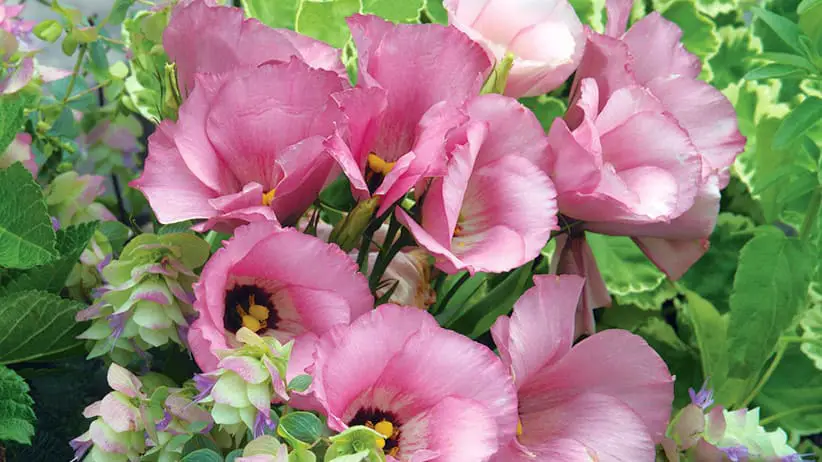Introduction
Welcome to the enchanting world of lisianthus flowers! Delicate yet resilient, these blooms captivate with their beauty and charm. In this guide, we’ll delve into everything you need to know about lisianthus flowers, from their origins and varieties to care tips and creative uses.
Unveiling the Elegance: Lisianthus Flower Origins and Significance
Lisianthus flowers, also known as Eustoma or Prairie Gentian, trace their origins to the grasslands of the southern United States, Mexico, and the Caribbean. With their lush petals and graceful appearance, lisianthus flowers have become symbols of appreciation, gratitude, and everlasting love.
The Diverse Palette of Lisianthus Varieties
Exploring Lisianthus Colors and Shapes
Lisianthus flowers boast a diverse array of hues, ranging from pristine whites and soft pastels to vibrant pinks and deep purples. Their petals can exhibit various shapes, including single, double, or ruffled forms, adding to their allure and versatility.
Cultivating Lisianthus: Tips for Growing Success
Choosing the Ideal Growing Conditions
To cultivate thriving lisianthus blooms, provide them with ample sunlight, well-draining soil, and consistent moisture. Whether planting them in garden beds or containers, ensure they receive adequate space to flourish and ample airflow to prevent disease.
Nurturing Lisianthus: Care and Maintenance Guidelines
Watering and Feeding Essentials
Lisianthus flowers thrive in moist, but not waterlogged, soil. Water them deeply, allowing the top inch of soil to dry between waterings. Fertilize regularly with a balanced liquid fertilizer to encourage healthy growth and abundant blooms.
Lisianthus in Floral Design: Elevating Arrangements with Elegance
Incorporating Lisianthus into Bouquets and Centerpieces
Lisianthus flowers lend a touch of sophistication to floral arrangements with their graceful stems and long-lasting blooms. Whether used as focal points or accents, they complement a wide range of flowers and foliage, adding depth and texture to bouquets and centerpieces.
Lisianthus: A Symbol of Love and Celebration
Lisianthus in Weddings: Bridal Bouquets and Décor Inspiration
Embrace the romance of lisianthus flowers on your special day by incorporating them into bridal bouquets, boutonnieres, and tablescapes. Their timeless beauty and symbolism make them a perfect choice for weddings and celebrations of love.
Frequently Asked Questions (FAQs)
How do I prolong the vase life of lisianthus flowers?
To extend the vase life of lisianthus blooms, trim their stems at an angle and remove any foliage below the waterline. Place them in a clean vase filled with fresh water mixed with floral preservative, and display them away from direct sunlight and drafts.
Are lisianthus flowers suitable for novice gardeners?
Yes, lisianthus flowers are relatively easy to grow, making them suitable for both novice and experienced gardeners. With proper care and attention to their growing requirements, anyone can enjoy the beauty of lisianthus blooms in their garden or home.
Can lisianthus flowers be grown indoors?
While lisianthus flowers prefer outdoor cultivation in sunny locations, they can be grown indoors successfully with adequate light and proper care. Choose a bright spot near a window where they can receive at least six hours of sunlight daily, and ensure good air circulation to prevent fungal issues.
What pests and diseases should I watch out for when growing lisianthus?
Common pests that may affect lisianthus plants include aphids, spider mites, and thrips. Keep an eye out for signs of infestation, such as distorted growth or yellowing leaves, and treat affected plants promptly with insecticidal soap or neem oil. Additionally, prevent fungal diseases like powdery mildew by providing good air circulation and avoiding overhead watering.
Can lisianthus flowers be used in dried floral arrangements?
Yes, lisianthus flowers are well-suited for drying and preserving, allowing you to enjoy their beauty long after they’ve been cut. Harvest blooms at their peak freshness, remove excess foliage, and hang them upside down in a dry, well-ventilated area away from direct sunlight. Once fully dried, use them in wreaths, potpourri, or other decorative projects.
Are lisianthus flowers toxic to pets?
Lisianthus flowers are non-toxic to cats, dogs, and other common household pets, making them a safe choice for pet-friendly households. However, it’s always wise to monitor pets around plants and contact a veterinarian if you suspect any ingestion or adverse reactions.
Conclusion
In conclusion, lisianthus flowers enchant with their elegance, versatility, and enduring beauty. Whether adorning bridal bouquets, brightening garden beds, or gracing floral arrangements, these exquisite blooms never fail to captivate hearts and inspire admiration. Embrace the timeless allure of lisianthus flowers and infuse your surroundings with their graceful charm.


